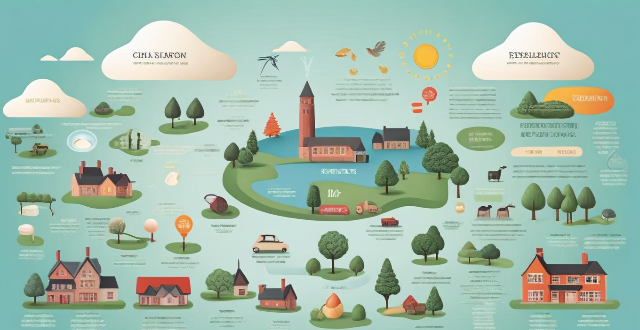The article discusses the various ways in which climate change affects poverty levels around the world. It highlights the direct effects of extreme weather events and health impacts, as well as the indirect effects on food security, livelihoods, and gender inequality. The article also suggests strategies for mitigating the impact of climate change on poverty, including investing in renewable energy sources, supporting smallholder farmers, enhancing resilience through improved infrastructure, promoting gender equality, and providing social protection programs.

How Does Climate Change Affect Poverty Levels?
Climate change is a global phenomenon that affects all aspects of life, including poverty levels. The relationship between climate change and poverty is complex and multifaceted, with both direct and indirect effects on the poorest communities around the world. In this article, we will explore how climate change affects poverty levels and what can be done to mitigate its impact.
Direct Effects of Climate Change on Poverty
Extreme Weather Events
One of the most significant direct effects of climate change on poverty is the increase in extreme weather events such as floods, droughts, and storms. These events can have devastating consequences for poor communities, leading to loss of life, damage to homes and infrastructure, and disruption of livelihoods. For example, a flood might destroy a farmer's crops or wash away a fisherman's nets, leaving them without an income or means to support their families.
Health Impacts
Climate change also has direct effects on health, which can exacerbate poverty. Rising temperatures can lead to heat-related illnesses, while changes in precipitation patterns can increase the risk of waterborne diseases. Additionally, air pollution from burning fossil fuels can cause respiratory problems, particularly among those living in urban areas with high levels of pollution. These health impacts can result in lost productivity, increased medical expenses, and even death, further deepening poverty.
Indirect Effects of Climate Change on Poverty
Food Security
Climate change also has indirect effects on poverty through its impact on food security. Changes in temperature and precipitation patterns can affect crop yields, making it more difficult for farmers to produce enough food to feed their families and sell at market. This can lead to higher food prices, which disproportionately affect poor households that spend a larger portion of their income on food. Additionally, climate change can lead to shifts in pest and disease populations, further reducing crop yields and exacerbating food insecurity.
Livelihoods
Many people in developing countries rely on natural resources such as forests, fisheries, and grasslands for their livelihoods. Climate change can disrupt these ecosystems, making it more difficult for people to earn a living from activities such as farming, fishing, and herding. For example, rising sea levels can destroy coastal fishing villages, while changing rainfall patterns can make it harder for pastoralists to find water for their animals. These disruptions can force people to migrate in search of new opportunities, often leading to overcrowded cities and increased competition for scarce resources.
Gender Inequality
Finally, climate change can exacerbate gender inequality by disproportionately affecting women and girls. Women are often responsible for collecting water and firewood, tasks that become more difficult when resources are scarce due to climate change. Additionally, women are more likely to work in agriculture and other informal sectors that are vulnerable to climate shocks. This can limit their ability to earn an income and contribute to household decision-making, perpetuating cycles of poverty and inequality.
Mitigating the Impact of Climate Change on Poverty
To address the impact of climate change on poverty, it is essential to take action at both the global and local levels. Some strategies include:
- Investing in renewable energy sources such as solar and wind power to reduce reliance on fossil fuels and decrease greenhouse gas emissions.
- Supporting smallholder farmers through initiatives such as climate-smart agriculture practices and access to financial services.
- Enhancing resilience through improved infrastructure, such as irrigation systems and early warning systems for extreme weather events.
- Promoting gender equality by ensuring that women have equal access to resources, education, and decision-making power within their communities.
- Providing social protection programs such as cash transfers or food assistance to help vulnerable populations cope with the impacts of climate change.